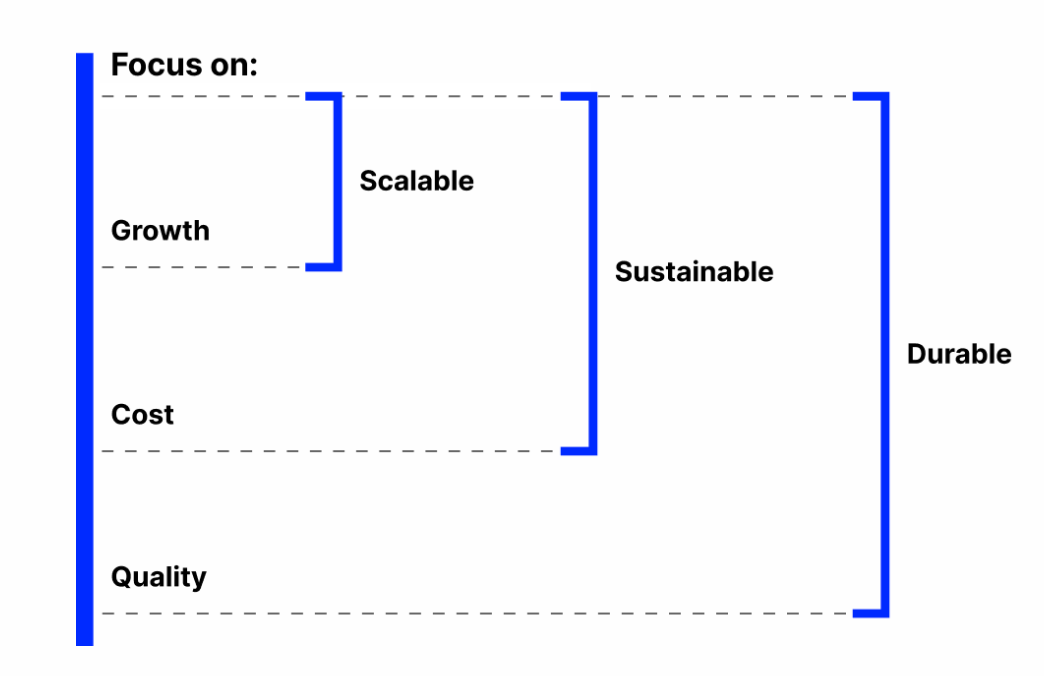👋 Hey, Toni from Growblocks here! Welcome to another Revenue Letter! Every week, I share cases, personal stories and frameworks for GTM leaders and RevOps.
I recently had Jacco van der Kooij on the podcast where he talked about how SaaS is in the middle of a massive change. And businesses that aren’t adapting to it now are going to be left behind. You can listen to the whole episode here.
Jacco wrote the book on Revenue Architecture (literally), and he’s giving an exclusive first look to Revenue Letter subscribers. Sign up here and get the first chapter in your email. Or buy the full version here.
We’re in that moment, right? It’s hitting us. It’s hitting on those productivity levels, which has its roots in cultural. It’s hitting us on productivity level, which is being disrupted by AI. It’s hitting us on the cost structure, which is hitting us on the sustainability level.
Jacco didn’t paint a rosy picture of SaaS. According to him, we’re going to look back at this coming year and say it had one of the biggest impacts on our lives.
In today’s Revenue Letter, I wanted to break down some of his thoughts on what’s to come.
Jacco believes that SaaS at the moment is going through (at least) 4 rapid changes. And what’s worse, it’s happening at the same time, and the speed with which these changes are happening and the scale of impact they are having is beyond any comprehension.
He equates it to the first days of Covid.
We had no idea that a few weeks later, all airports would stop operating, offices would close, and we’d be living in a new normal. I vividly remember driving in my car in the middle of traffic jam hours and calling my wife saying:
There’s no cars on the road! I didn’t understand what was changing, and I didn’t know how big that change was.
Change is already here
The problem with change is that we often experience it, but we rarely understand its impact until it’s too late.
You’ve more than likely experienced that change over the last few years. The cost of growth is climbing, performance is down - and how companies are assessed has fundamentally changed.
And he believes we’re not done yet.
Technological changes
We’re seeing AI create drastic change everywhere. But unlike other industrial changes, AI is unique in SaaS because it impacts every single SaaS business.
With LLM’s we look at AI as a tool to bring costs down. We can do things faster. We can write more emails. We can process more research.
Now add that to every part of the GTM. All of a sudden it’s a dramatic shift in the ways we work and what we invest in.
That means most of the rules of thumb we’ve been using over the last two decades might simply be wrong now.
Cultural changes
Ever since Covid hit, there's been a noticeable dip in how much everyone's getting done.
According to Jacco, there’s this cultural change of productivity because people are working remote, therefore not as productive as they once were, and it's causing a lot of disruption out there in the market. What is productivity? And how to get people productive in a world that is “on fire”?
It was already hard to get people to do what we wanted when we overpaid, gave them food, toys, and entertainment. Now when we take all that away, how in the world will we get their attention?
VC Industry-wide Changes
Sometimes I can’t believe that it was only a year ago that SVB failed. How long was that a thing? A week? A month? The news cycle went by fast.
The entire VC capital market experienced massive changes:
Early summer of 2022 many VCs were still recommending “keep hiring.” Why was that?
At SaaStr 2023 we were told “FCF” is what it is all about - which was abandoned only months later
Rule of 40 or 50 is the “next thing” - which is completely bananas
And if you’re trying to go IPO, good luck!
Hundreds (if not 1000s) of IPOs are backed up
The target has moved from $100M to $500M ARR
And renowned CEO/CROs are suddenly without a job. What the hell is happening behind the scenes?
Moreover, many VCs have become what investors call “bag holders,” stuck with a portfolio of companies where valuations have plummeted and no clear path to exit. At the same time, very few investments fit this new world, reducing the volume of new rounds.
Buyer behavior changes
SEO, Open rate, Click-through-rates, and all other metrics indicated that prospects are no longer responding to programs like they did in the past.
These prospects are dealing with less budgets than ever before and are being asked to slash any unnecessary tools. That leads to:
Growth rate has halved (from 36% to 18%)
Client Acquisition cost is up to $2.60 for a single dollar (from $1.50)
NRR is falling by 10-20%
We’ve all experienced these changes (some of us more than others), so this is not new. But what is new is that all of these changes are hitting us at the same time.
And as Jacco points out, the speed with which these changes are happening, and the scale of impact they are having is beyond any comprehension.
And from what we’ve seen, most companies are not taking the required actions to straighten the ship.
What can we do about it?
The convenient age of SaaS is over, and efficient growth is king.
If you’re beyond $10M, you need to treat your business like a revenue factory.
That means 2 things:
1. Understand the parts of the factory that work together

Let’s say you have a factory and you produce bicycles. What are your main goals?
Growth (Make more bikes)
Cost (Make money off those bikes)
Quality (Make sure they don’t break)
And just like quality management theory in the 1950s states, each of those goals interact with each other. For example. you lower the cost and increase production, your quality will go down. You can have it fast, good, or cheap. Pick two.
It’s the same in SaaS. As a highly complex and sensitive model, any small change you make in one end will significantly impact something else.
2. Understand the production lines that work (and those that don’t)
In your GTM, your production line is your motion. Outbound, inbound, enterprise, partners, event led, community led, etc. Companies operating at +100M tend to depend on two or three factory lines that produce the lion’s share of revenue.
These production lines have the capability of scaling (how much can they produce?), and they have a cost structure (sustainability).
Here’s what we see: Lots of people are spending too much money on GTM motions that are not producing enough revenue. That also means we’re not spending enough on GTM motions that are actually generating growth.
And even if you know how the factory works, the biggest problem becomes this: how do you know it’s running well? Especially when you add all of the complexities of SaaS to the mix.
The modern solution to this is a strong revenue architecture.
A good first step is to read Jacco’s book, which gives you a better understanding. If you want to check it out, he’s giving Revenue Letter subscribers a free chapter -get it here. Or buy the full version here.
The second step is to figure out how you can apply that knowledge to your own business model. That’s exactly what we enable GTM teams to do with Growblocks. Check it out here.
The Definitive Guide: Revenue Architecture for SaaS.
By the way, I’m going to answer exactly how to actually run that over the next couple of weeks. In the next four posts, we’ll provide structured outlines, core frameworks, and models that’ll help you grow in today’s new SaaS environment.
Part 1: A framework for recurring revenue - coming Tuesday
Part 2: Metrics matter (until they don’t)
Part 3: Your model defines your motion
Part 4: Revenue Architecture in practice





